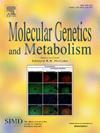戈谢病的挑战:来自专家小组的观点
IF 3.7
2区 生物学
Q2 ENDOCRINOLOGY & METABOLISM
引用次数: 0
摘要
这篇综述集中在戈谢病(GD)临床医生和研究人员高度重视的八个主题:1)考虑GD作为不同的类型,而不是一个谱。对文献的回顾清楚地支持了GD有不同类型的观点。1型的特点是没有原发性神经病变的累及,而2型和3型的特点是进展性原发性神经病变。2)神经和神经病变表现。越来越多的证据表明,周围神经系统可能参与GD 1型,并且在该组中也可能有中枢神经系统疾病的体征和症状。然而,GD 1型的特点是没有原发性神经病变,而GD 2型和GD 3型的特点是进行性(尽管是可变的)原发性神经病变。跳眼运动异常被认为是神经性GD的诊断,但它们也可能发生在1型GD和其他炎症性疾病中。3) GBA1全序列的重要性。由于深层内含子变异对基因表达的潜在影响,这种方法优于外显子组测序。它还具有检测基因面板可能遗漏的变异等位基因的能力。4)意义不定的单克隆γ病(MGUS)。与一般人群相比,GD患者患MGUS、多发性骨髓瘤和非霍奇金淋巴瘤的风险升高,强有力的证据表明,lyso-Gb1刺激GD和MGUS患者单克隆免疫球蛋白(m蛋白)的形成。5) GD累及肺部。高达45%的1型GD患者和55%的3型GD患者可通过肺量测定法发现肺部并发症。有限的证据表明,酶替代疗法(ERT)可以降低1型GD患者这些并发症的严重程度。6) Gaucheromas。这些可能发生在1型或3型GD患者中,但关于其起源、生长机制、细胞组织和生化活动的详细信息很少,也没有明确的治疗指导。Gaucheromas表现为良性(即非转移性)肿瘤,将其分类为良性肿瘤可能是合理的。7)骨骼和关节受累。单靠双能x线吸收仪扫描不足以监测GD患者可能发生的所有骨变化。定量磁共振成像(MRI)技术使用Dixon定量化学位移成像提供了与GD严重程度评分、骨骼并发症和GD骨骼受累的生物标志物相关的结果。胸后凸是GD 1型和GD 3型的常见并发症,关于ERT或底物合成抑制疗法(SSIT)对这种疾病的影响的信息非常有限。8)治疗启动、选择、组合和切换。儿科患者及时开始治疗是很重要的,因为GD会导致生长受损、骨量峰值降低和青春期延迟。这些不良后果往往可以通过及时治疗得到改善或预防。ERT或依格司他(一种SSIT药物)都适合作为成人GD的一线治疗。从ERT切换到依格司他,或不同ERT产品之间的研究表明,改变治疗是安全的,尽管疗效结果有所不同。一个关键的问题是缺乏能够到达中枢神经系统的治疗方法,以减缓或停止GD 2型或3型患者的神经病变进展,并可能降低GD 1型患者和GBA1变体杂合子帕金森病的风险。本文章由计算机程序翻译,如有差异,请以英文原文为准。
Challenges in Gaucher disease: Perspectives from an expert panel
This focused review concentrates on eight topics of high importance for Gaucher disease (GD) clinicians and researchers: 1) The consideration of GD as distinct types rather than a spectrum. A review of the literature clearly supports the view that there are distinct types of GD. Type 1 is characterized by the absence of primary neuronopathic involvement, while types 2 and 3 are characterized by progressive primary neuronopathic disease. 2) Neurologic and neuronopathic manifestations. A growing body of evidence indicates that the peripheral nervous system may be involved in GD type 1 and that there may also be signs and symptoms of central nervous system (CNS) disease in this group. However, GD type 1 is characterized by the absence of primary neuronopathic disease, whereas GD types 2 and 3 are characterized by progressive, albeit variable, primary neuronopathic disease. Abnormalities in saccadic eye movements have been suggested as being diagnostic for neuronopathic GD, but they may also occur in GD type 1 and in other inflammatory diseases. 3) The importance of whole GBA1 sequencing. This approach is superior to exome sequencing because of potential effects of deep intronic variants on gene expression. It also has the capacity to detect variant alleles that might be missed with gene panels. 4) Monoclonal gammopathy of undetermined significance (MGUS). The risks of MGUS, multiple myeloma, and non-Hodgkin's lymphoma are elevated in patients with GD compared to the general population and strong evidence indicates that lyso-Gb1 stimulates the formation of monoclonal immunoglobulins (M-protein) in patients with GD and MGUS. 5) Pulmonary involvement in GD. Pulmonary complications can be identified through spirometry in up to 45 % of patients with GD type 1 and 55 % of those with GD type 3. Limited evidence exists that enzyme replacement therapy (ERT) reduces the severity of these complications in patients with GD type 1. 6) Gaucheromas. These may occur in patients with GD types 1 or 3, but there is little detailed information about their inception, mechanisms underlying growth, cellular organization, and biochemical activities, and no definitive guidance for their management. Gaucheromas behave like benign (i.e. non-metastasizing) neoplasms, and it may be reasonable to classify them as such. 7) Bone and joint involvement. Dual-energy X-ray absorptiometry scans alone are insufficient for monitoring all changes in bone that may occur in patients with GD. Quantitative magnetic resonance imaging (MRI) techniques using Dixon quantitative chemical shift imaging have provided results that correlate with GD severity scores, bone complications, and biomarkers for GD bone involvement. Thoracic kyphosis is a common complication of GD types 1 and 3, and there is very limited information regarding the effects of ERT or substrate synthesis inhibition therapy (SSIT) on this condition. 8) Treatment initiation, selection, combination, and switching. Prompt initiation of treatment in pediatric patients is important as GD can lead to impaired growth, lower peak bone mass, and delayed puberty. These adverse outcomes can often be ameliorated or prevented with timely treatment. Either ERT or eliglustat, a SSIT agent, is suitable as first-line treatment of adults with GD. Studies of switching from ERT to eliglustat, or between different ERT products, have indicated that changing treatment is safe, although efficacy outcomes vary. A critical remaining issue is the lack of treatments capable of reaching the CNS to slow or halt the progression of neuronopathic disease in patients with GD type 2 or 3 and potentially reduce the risk of Parkinson's disease in GD type 1 patients and heterozygotes for GBA1 variants.
求助全文
通过发布文献求助,成功后即可免费获取论文全文。
去求助
来源期刊

Molecular genetics and metabolism
生物-生化与分子生物学
CiteScore
5.90
自引率
7.90%
发文量
621
审稿时长
34 days
期刊介绍:
Molecular Genetics and Metabolism contributes to the understanding of the metabolic and molecular basis of disease. This peer reviewed journal publishes articles describing investigations that use the tools of biochemical genetics and molecular genetics for studies of normal and disease states in humans and animal models.
 求助内容:
求助内容: 应助结果提醒方式:
应助结果提醒方式:


